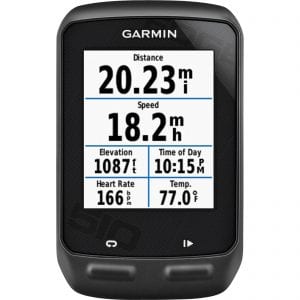One popular question from wheel-on trainer users in the Zwift Riders Facebook group is:
“Why don’t my Garmin computer’s distance/speed numbers match Zwift’s?”
The answer to this is quite simple, although it can be hard to wrap your head around if you’re new to virtual cycling.
Simply put, Zwift calculates speed (and therefore distance) based on power, while your Garmin calculates speed based on wheel revolutions. Because of this, your numbers will never match. And that’s OK!
More Details
Let’s imagine you have your Garmin turned on while Zwifting. Here’s how distance computation is happening on your Garmin and Zwift:
- Your Garmin is picking up each wheel revolution via the speed sensor on your back wheel and multiplying the number of revolutions by your tire circumference to compute speed and distance.
- Zwift is taking the power you’re putting into the pedals and feeding that into its algorithm to determine how fast you go in the Zwift environment given your weight, height, virtual equipment, current road gradient, drafting status, and more. Read “How Does Zwift Calculate My Speed?” for more info >
Note: if you don’t have a smart trainer or power meter, Zwift is estimating your power based on known power curves for particular trainers (we call this “zPower” or “virtual power”). In this case, Zwift does use your speed sensor, but it is converting that wheel revolution data into power numbers. Read more about Zwift’s virtual power calculations >


